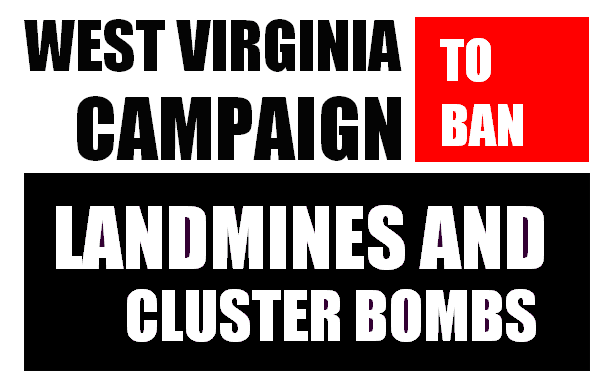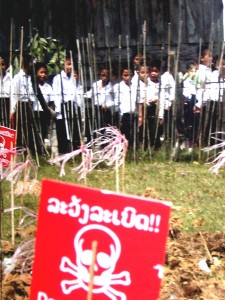
Secretary of State Hillary Clinton touched down in Vientiane, Laos on July 11th, marking the first time that a U.S. Secretary of State has visited the country since 1955. While there, Secretary Clinton made a visit to the Cooperative Orthotic and Prosthetic Enterprise (COPE) Center to observe medical and rehabilitation services for amputees, many of whom are victims of explosions from bombs left over from the Vietnam War era.
Laos has a horrific distinction as the world’s most heavily bombed nation with about a ton of ordnance for each man, woman and child. Years later, only 1 percent of contaminated lands have been cleared.
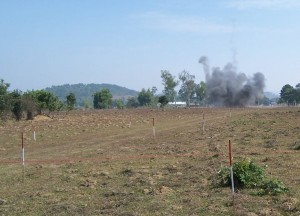
In 2010, members of the West Virginia Campaign to Ban Landmines/Cluster Munitions visited Laos to document the issue. The scale of devastation caused by cluster bombs is immense and shocking. I cannot understate the impact of a field trip to Xieng Khouang province which is one of the most heavily bombed areas in the Laos. While there we witnessed clearance operations and the destruction of cluster munitions. It was powerful and truly life changing to witness the extent of the contamination first hand. As a teacher, what was particularly distressing was the close proximity of a school near this area. As I watched the children play, I could only wonder how often they came into contact with these remnants of war. I could easily imagine how the curiosity of a child would lead them to investigate these “bombies”. While visiting the COPE Center, we witnessed the crafting of small hands, feet, legs and arms made especially for children.
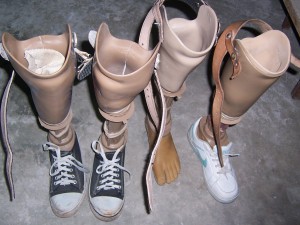
Many of these victims happen upon cluster munitions while partaking of their daily activities like farming and retrieval of water.
We were permitted to view the clearance team as they used metal detectors for surface clearance to detect weapons underground. When bombs are found, they were detonated either with a fuse or by an electrical charge.
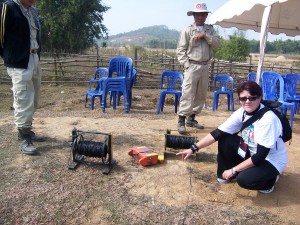
Seeing first-hand the painstaking work of deminers, looking at the pock-marked earth and feeling the shock of a blast even from a safe distance gave us a better sense of the reality of the cluster bomb problem that people face every day. While in Vientiane, we were reminded of the long-term devastation cluster munitions cause when a cluster submunition explosion killed a 10-year-old girl and injured her 15-year-old sister.
For more than 40 years, cluster bombs have killed and wounded innocent people, causing inhumane suffering, loss and hardship for thousands in countries across the planet. Cluster bombs are indiscriminate killers that spew deadly shrapnel over large swathes of land. Air-dropped or ground-launched, they cause two major humanitarian problems and risks to civilians. First, their widespread dispersal means they cannot distinguish between military targets and civilians so the humanitarian impact can be extreme, especially when the weapon is used in or near populated areas. Many submunitions fail to detonate on impact and become de facto antipersonnel mines killing and maiming people long after the conflict has ended. These duds are more lethal than antipersonnel mines; incidents involving submunition duds are much more likely to cause death than injury.
As a result, the vast majority of cluster bomb casualties have been civilians. One third of all recorded cluster munitions casualties are children. 60% of cluster bomb casualties are injured while undertaking their normal activities. They have indiscriminate wide-area effects and leave severe and lasting humanitarian and development consequences. They hamper post-conflict rebuilding and rehabilitation and the dangerous work of cluster bomb clearance absorbs funds that could be spent on other urgent humanitarian needs. They can deny access to food, water, and other basic needs, and inhibit freedom of movement, limiting people’s ability to participate in education or access medical care. Without determined action, the civilian harm caused by these weapons both during and after conflict will continue to grow.
“Legacies of War” pushed for Clinton’s groundbreaking trip to Laos since July 2011, when it joined with six former U.S. Ambassadors/Chiefs of Mission to Laos in encouraging the Secretary to visit the country and to make a long-term commitment to clearing Laos of UXO. “Legacies of War ” was founded in 2004 to raise awareness about the history of the Vietnam War-era bombings of Laos and advocate for greater U.S. funding to clear UXO. Legacies seeks to provide space for healing the wounds of war using art, culture, education, community organizing, and dialogue among the Laotian-American community and the broader U.S. public. The organization is based in Washington, D.C. VISIT: legaciesofwar.org for more information on how YOU can help!
